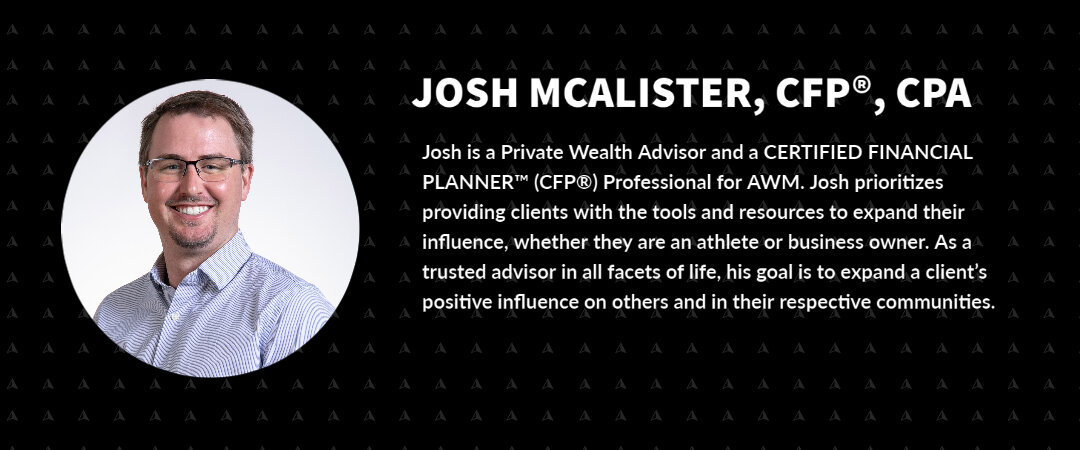Wealthy People Get to Be Generous | Josh McAlister
This blog is the second of the four-part series of ‘giving every dollar a job’ and this category of wealth allocation might be my favorite. This article is meant to serve two purposes – connect the heart of giving and provide some tactical strategies to maximize your giving from a tax perspective.
As a reminder, below are the four categories where every dollar can go:
Charity – Our Discussion for today
Savings
Lifestyle
Heart of Giving
Why do we give? I think the better question is why don’t we give? According to a USA Today article written in 2018 – Americans do not give many dollars to charitable organizations. One striking statistic I saw in this article – for income levels of $200,000 - $249,999, Americans on average gave $5,472. This represents a 2.2% - 2.7% giving of gross income. I would venture to guess this would be less than you would expect!
We give when we feel called to a cause – passion or hope lead us to give our dollars to help enact change or injustices. Many times we do not give because we have not done our homework on where we want to give. This simply equates to no giving at all, and as we say at AWM – wasted wealth is wasted impact. One benefit that wealthy people have at their disposal is the opportunity to be generous!
Giving Strategies
I want to discuss three giving strategies that hopefully will help remove barriers to giving for a household. Know that these cannot replace passion and hope, but they can help eliminate certain roadblocks that we may face to giving:
Donor Advised Fund
Donor Advised Funds, or DAFs are increasingly popular given their immense flexibility. Think of a DAF as the most convenient way to give. Below are 5 benefits to a Donor Advised Fund:
Ease of Charitable Deduction Tracking – you get one tax document showing the amount you contributed to the DAF for tax reporting.
You can contribute cash or appreciated stock – benefits of appreciated stock giving are explained below.
If you desire to give a set percentage of your income, but do not know what charity should receive those funds – a DAF is a great option. There are no restrictions as to when the money should be disbursed from the fund – giving the household ample time to figure out where their funds should go.
Your money can be invested within the fund for growth.
Your money can go to any 501c (3) directly from the fund.
Appreciated Stock Giving
A great way to give charitably is to donate appreciated stock positions. It may sound counter intuitive to donate appreciated stock positions – but there are tax benefits to be had by avoiding capital gains tax.
For example: a household has stock that they purchased for $30,000 that is now worth $50,000 – and they would like to give $50,000 charitably this year. They can give $50,000 cash out of their annual income, or they can eliminate an embedded tax liability in their appreciated stock. Assuming if this household is within the 20% capital gains tax bracket – the household would pay $4,000 in capital gains tax once the stock was sold. By contributing the stock directly to a charity, or to a Donor Advised Fund, this household avoids the capital gain tax altogether, and has greater flexibility with their current year cash flow.
Bunched Giving
This last technique called ‘bunched giving’ is dependent upon your individual cash flow and some quick math. If a household has a set amount they want to give annually charitably and has excess cash on their hands-the timing of the giving can save the household big dollars. Assuming a state and federal tax bracket of 45% and planned to give of $50,000 by equal installments of $25,000 over the next few years, a household could save $11,160 by accelerating the giving of the $50,000 all into one year. See below for example:
The household gets the tax benefit of itemizing their deductions in year one, and then takes the standard deduction in year two.
Conclusion:
Note that these planning strategies might perk up your ear, but they will not replace the heart of your giving. Money is a tool to be stewarded, plain and simple. My challenge to you is this – seek out an advisor who discusses charitable giving with you. There is not a one size fits all approach, but a mutual decision on giving is going to provide better clarity and more peace around your household’s finances.


